Comuna 13
One of the most popular places to visit in Medellín is Comuna 13 to see the street art and learn a little bit about the troubled history of this area. This part of Medellín was pretty much a no-go area in the early 2000s – it was under the control of drug gangs, paramilitary organisations, and guerillas – and had extremely high murder rates. Many people from the area were forced out by the violence. The area backs on to the mountains at the edge of the city, and was the point of entry for guns, drugs, and anything else illegal coming from other parts of Colombia.
Nowadays a part of this area is booming with tourism – I’m not exaggerating to say that this was the place that we saw the most tourists in one spot in Medellín. So, what happened to Comuna 13 to change its fortunes?
Well, the city of Medellín embarked upon a comprehensive urban regeneration program, including the introduction of cable cars, and a giant outdoor escalator. The poorest areas of Medellín are on the steep hills around the city, and it was very difficult and time-consuming to get to any job in the city. Some of the cable cars have cut the travel time from over two hours, to just 20 minutes. The giant escalator allows fast access to the city, and encouraged a new sense of community in the area. The result was that crime rates plummeted, and before long the tourists came…
The part of Comuna 13 with the escalator is safe enough to visit on your own nowadays, but we decided to take a walking tour – as there was a company that only used guides that had grown up in the area. Our guide was called Laura, and as she led us around, she told us lots of things about growing up in Comuna 13.
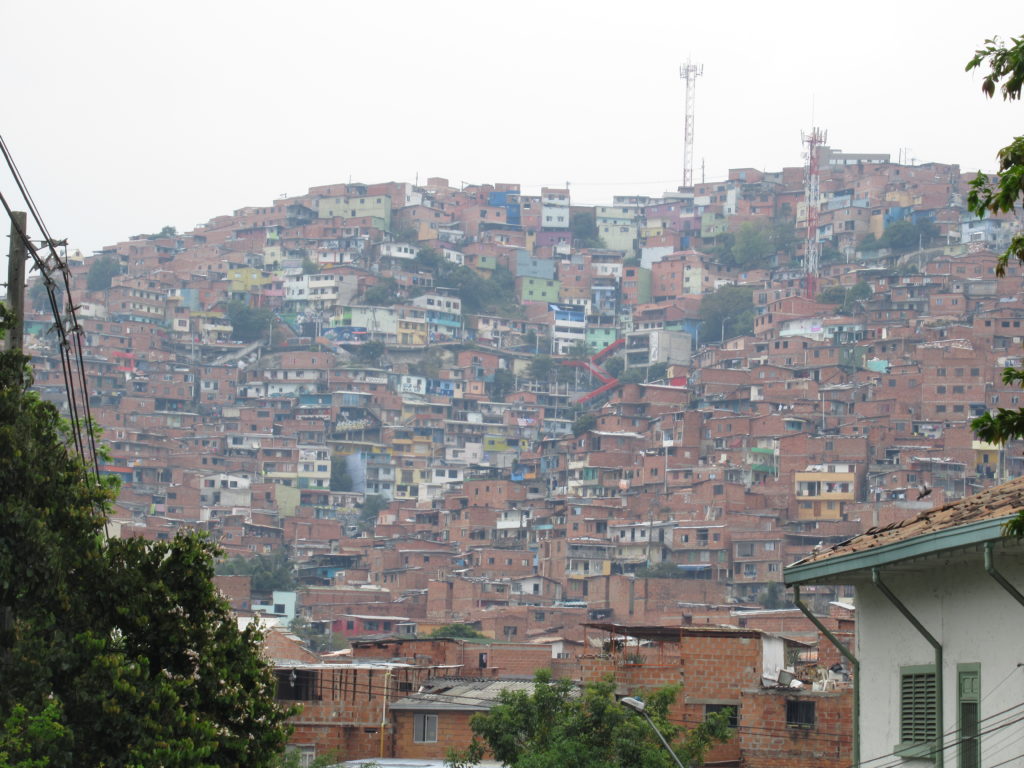
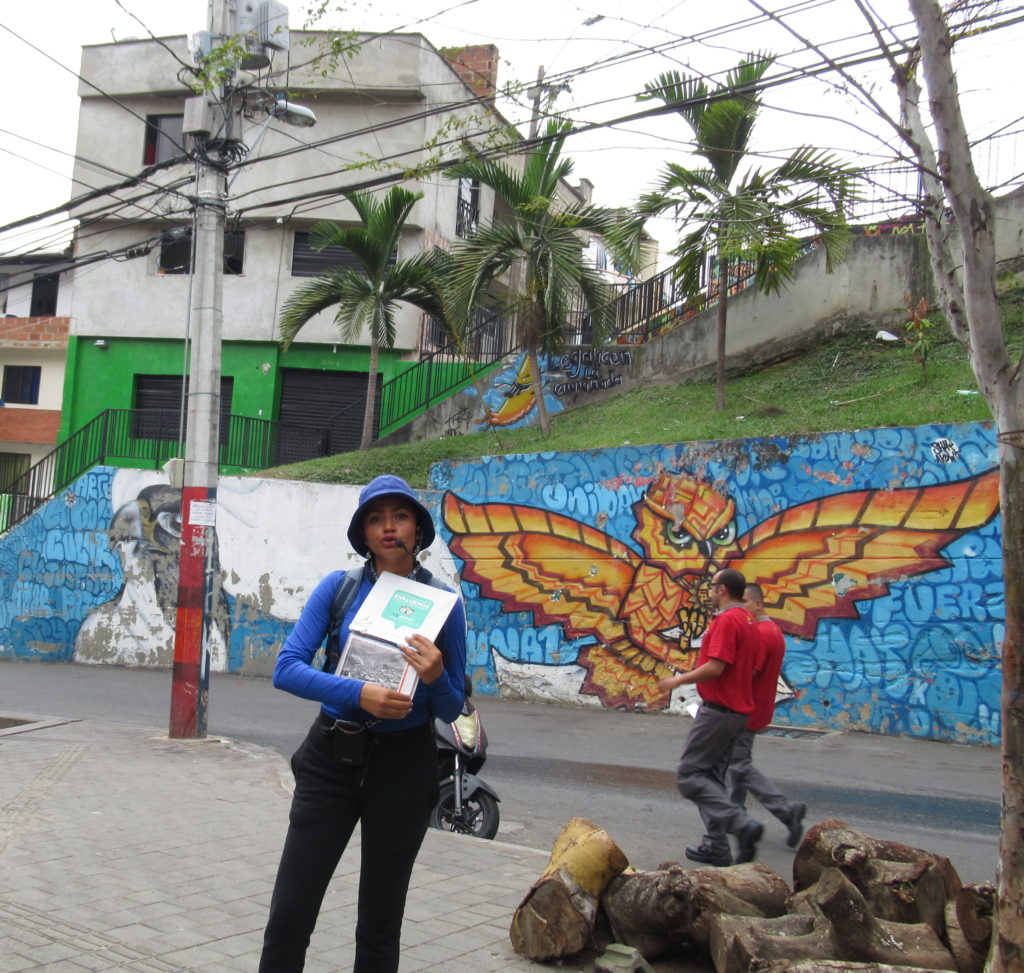
The first thing that she told us was that in 2002 the Colombian government sent in the army and heavy artillery including helicopters – and attacked the area trying to force out the illegal groups. This was called Operation Orion, and although the authorities declared it a success, many people believe it created a power vacuum and just allowed a different set of criminals to move in. Lots of innocent people also died during the operation.
Line J of the metrocable system opened in 2008, and the escalator was completed in 2011. In spite of these developments, much of Comuna 13 is still affected by gangs and drug violence – but things are slowly improving.
The purpose of the tour is to learn a bit about the history of Comuna 13, and also to appreciate the street art that has flourished in the area over the last 10 years or so. Our guide took us past most of the famous murals as we made our way up the hill to the higher levels.
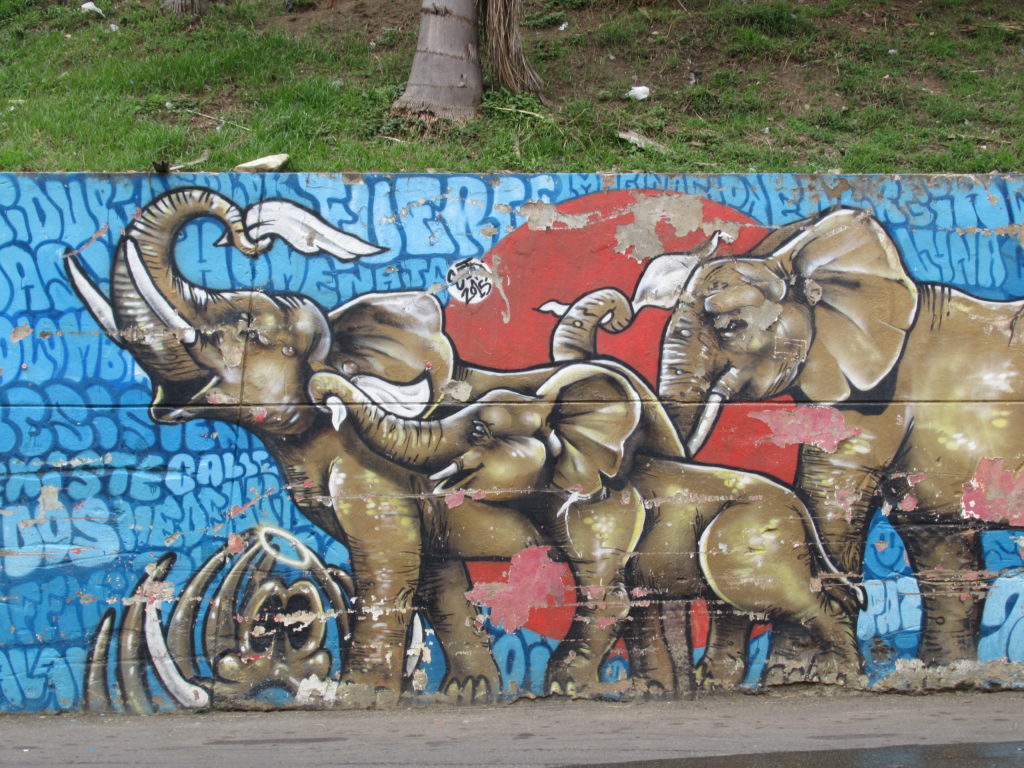
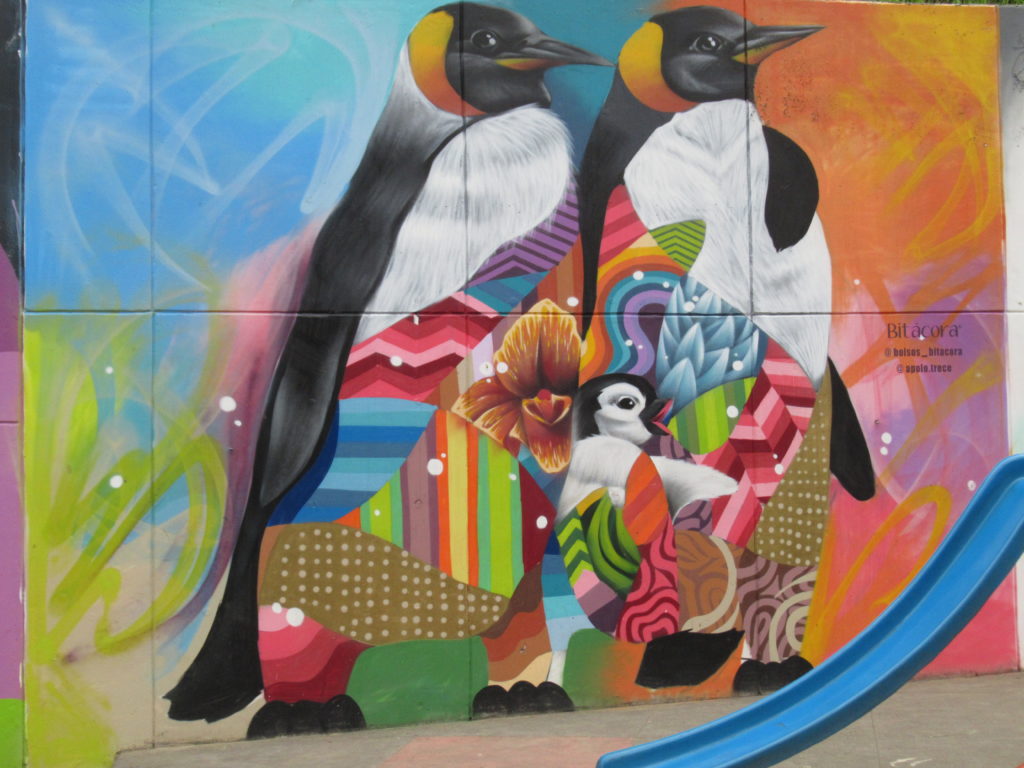
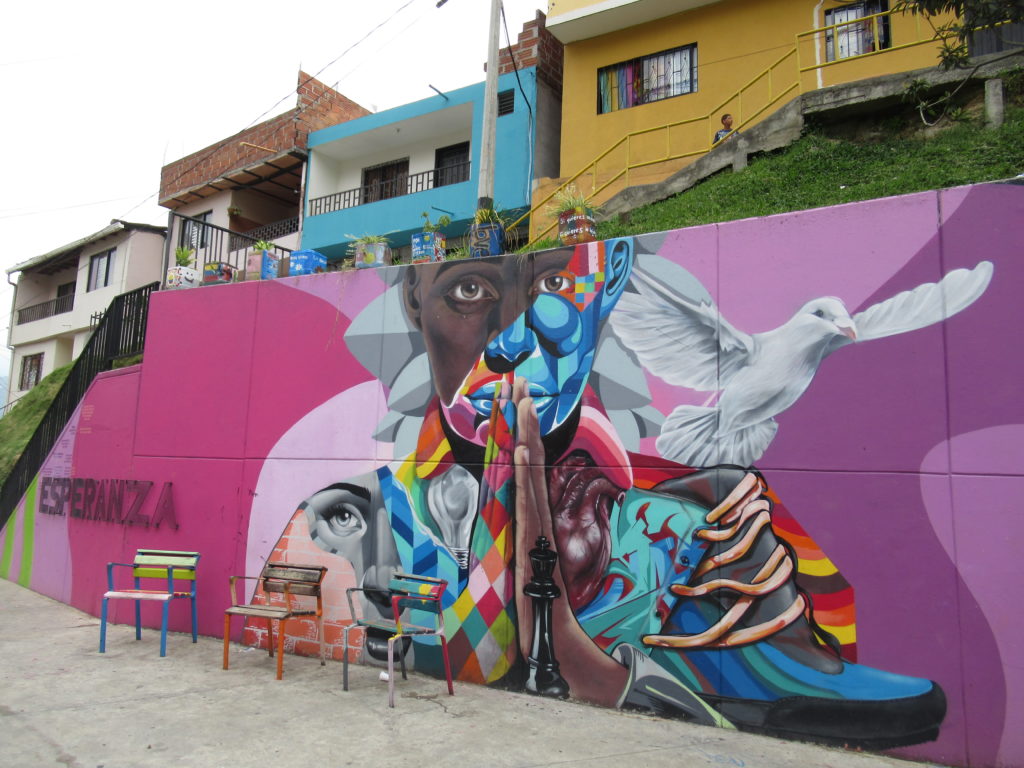
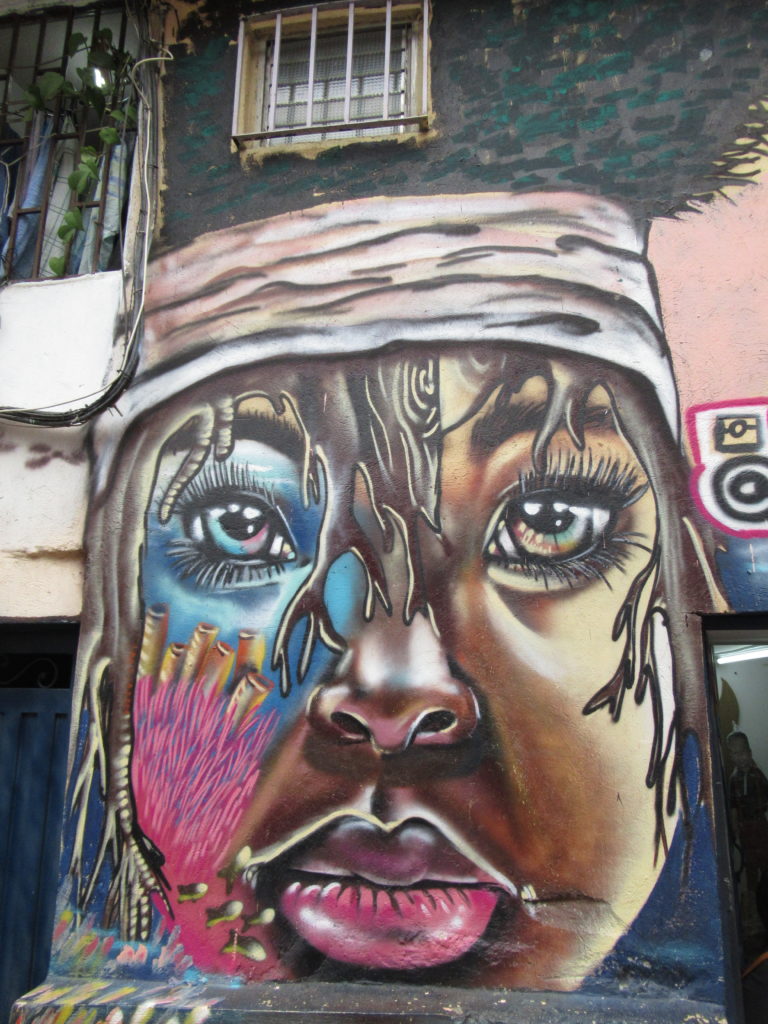
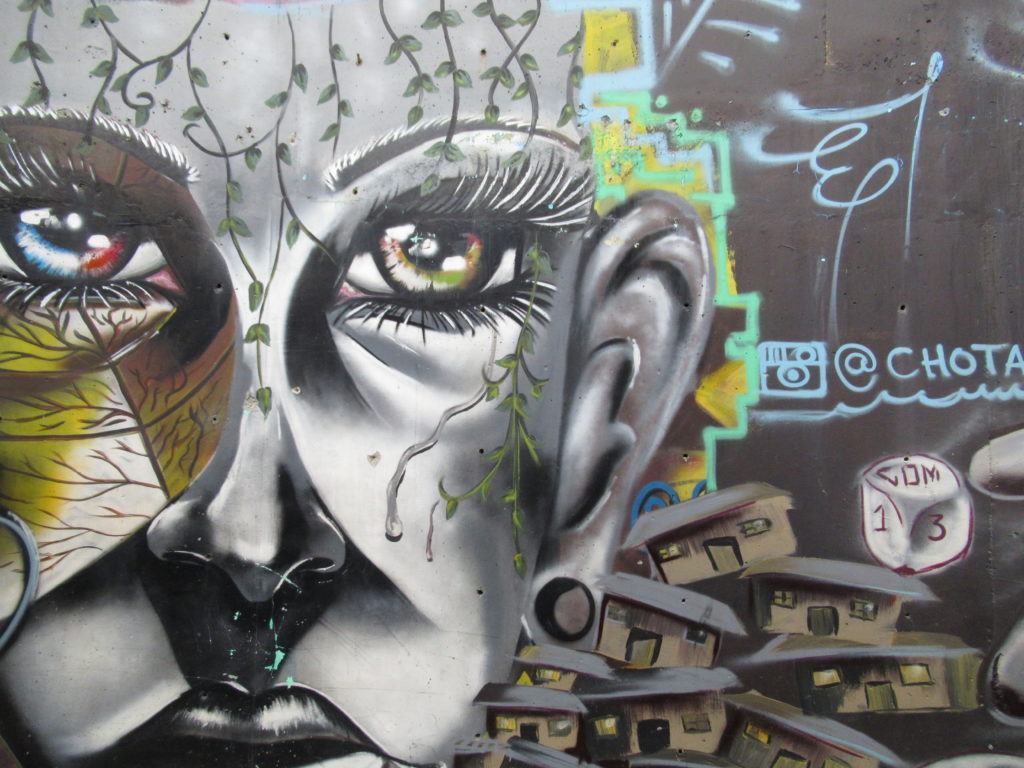
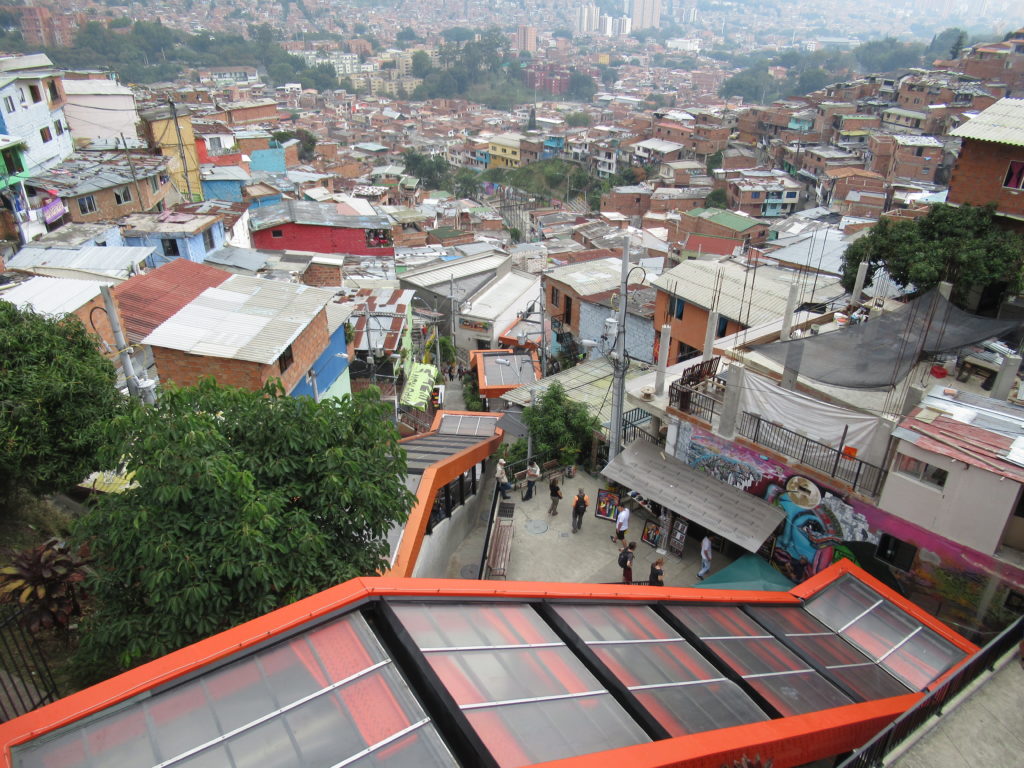

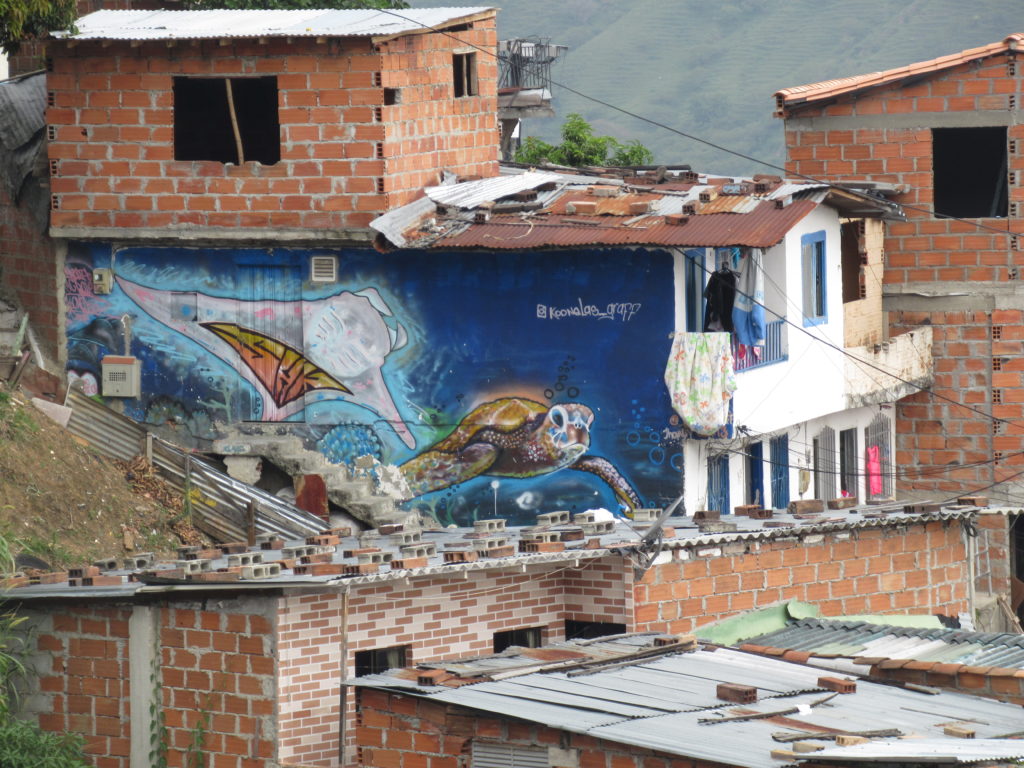
At the top of the escalators there is a wide walkway around the hill, with good views over Medellin and more murals.

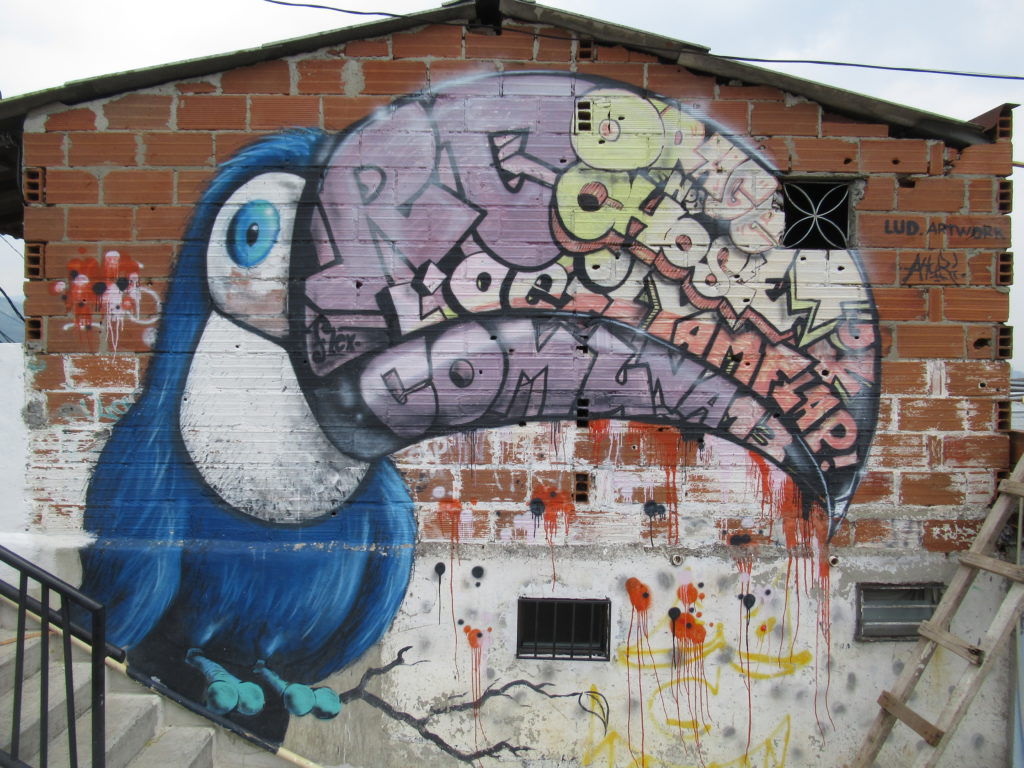

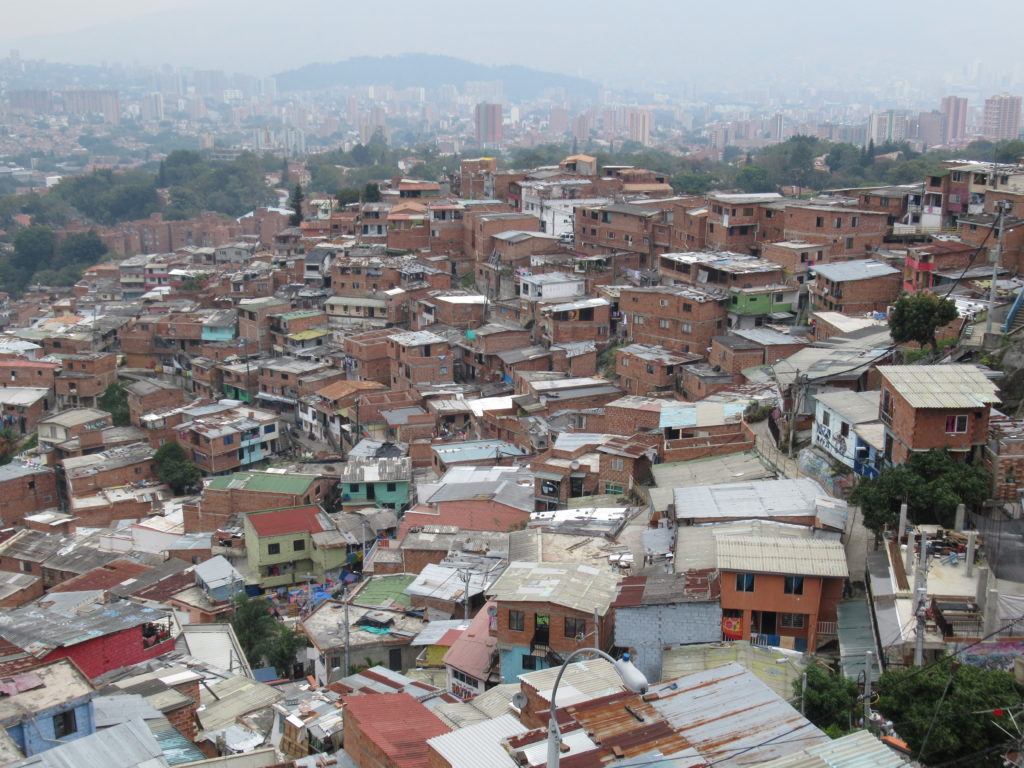

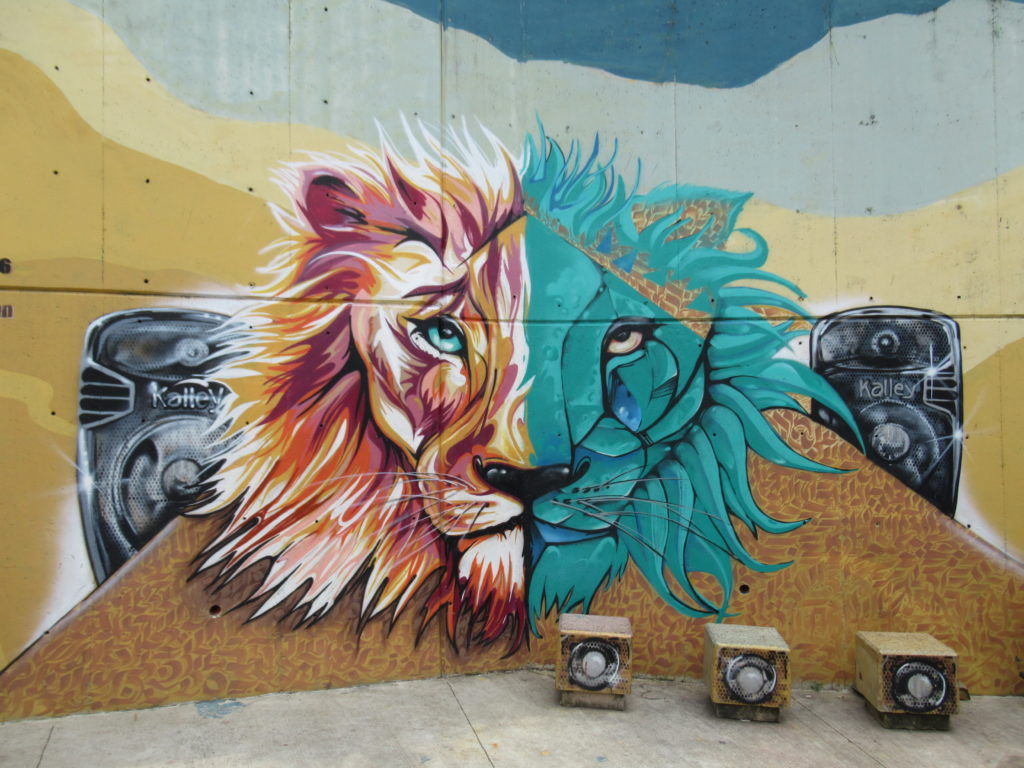


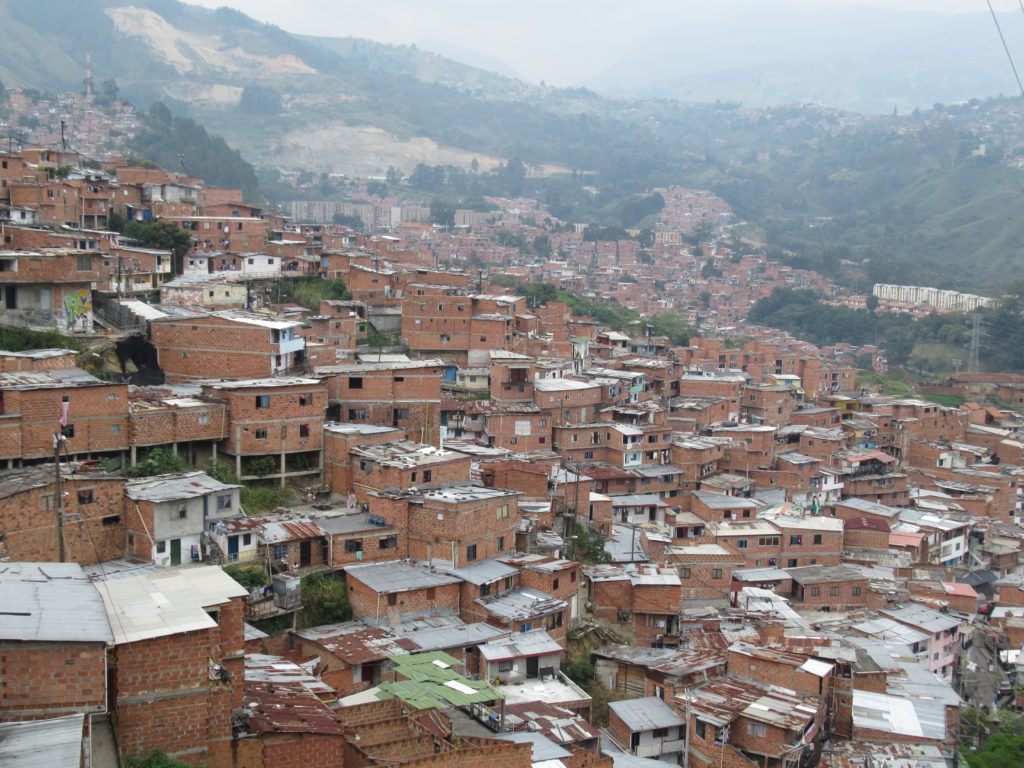
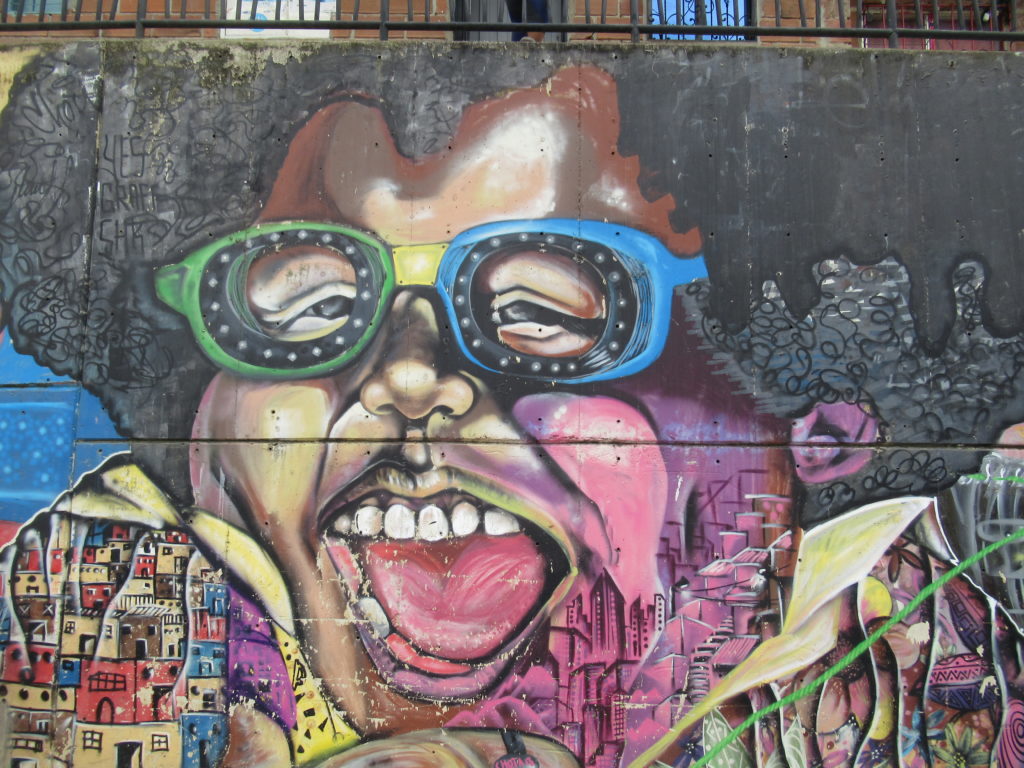

The tour concluded at the family house of Laura the guide, which had the downstairs converted to a viewing deck where her sister sold refreshments. Laura finished by telling us that although Comuna 13 still has lots of problems, an important difference for her is that she is no longer ashamed and embarrased to tell people that she lives in Comuna 13. She said that in the past, people wouldn’t admit it – as they would be shunned and refused jobs. Whereas now there is no longer any stigma attached to living there.
It had been a very interesting tour, and we had really enjoyed it – some of the murals were very impresive, and the history was fascinating. But the time had now come for us to walk back down to the metro station.
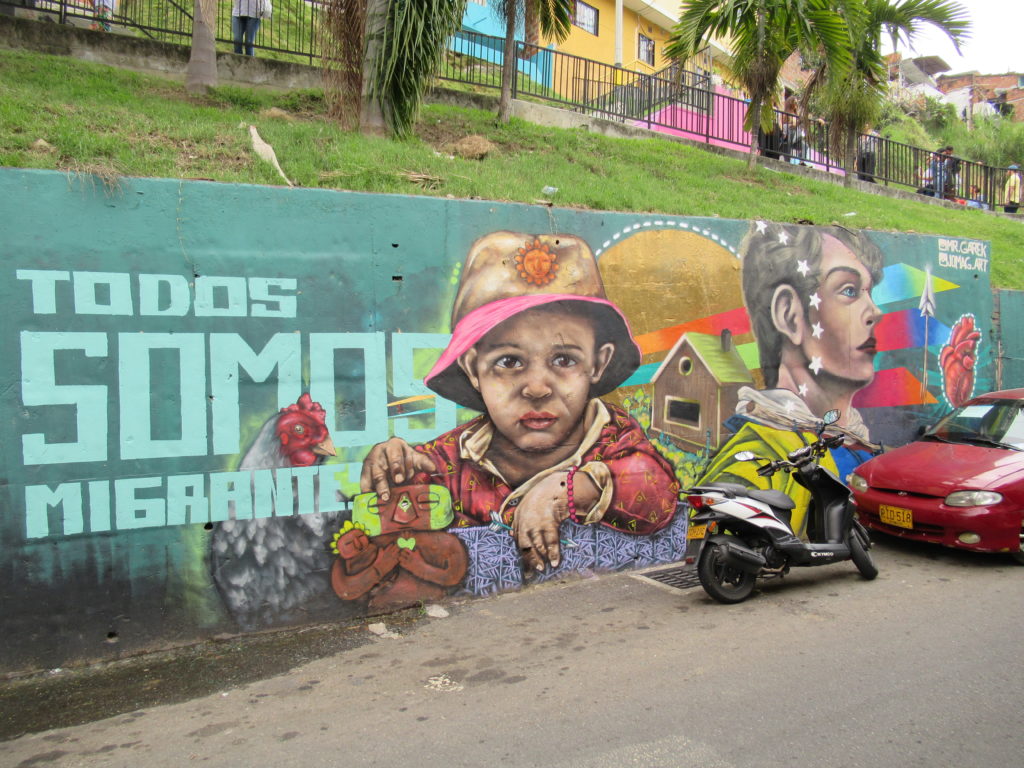
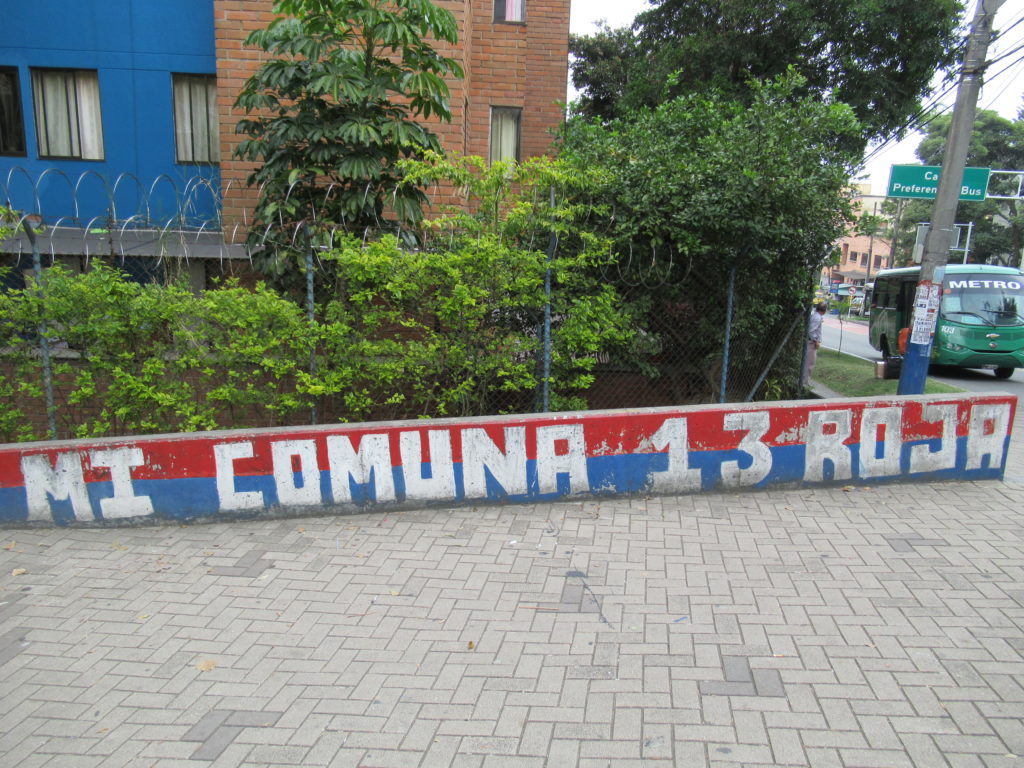
After a quick lunch near the metro station, it was time to take a ride on Line J of the cable car system. This cable car goes up and over Comuna 13 and right to the edge of Medellin.
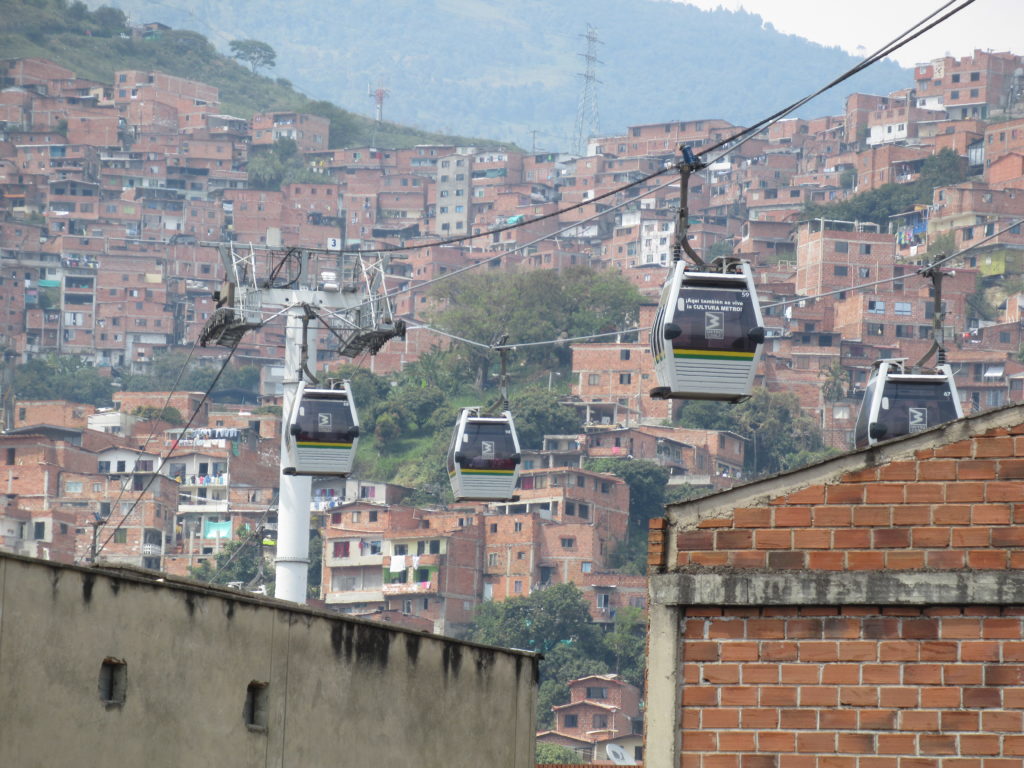

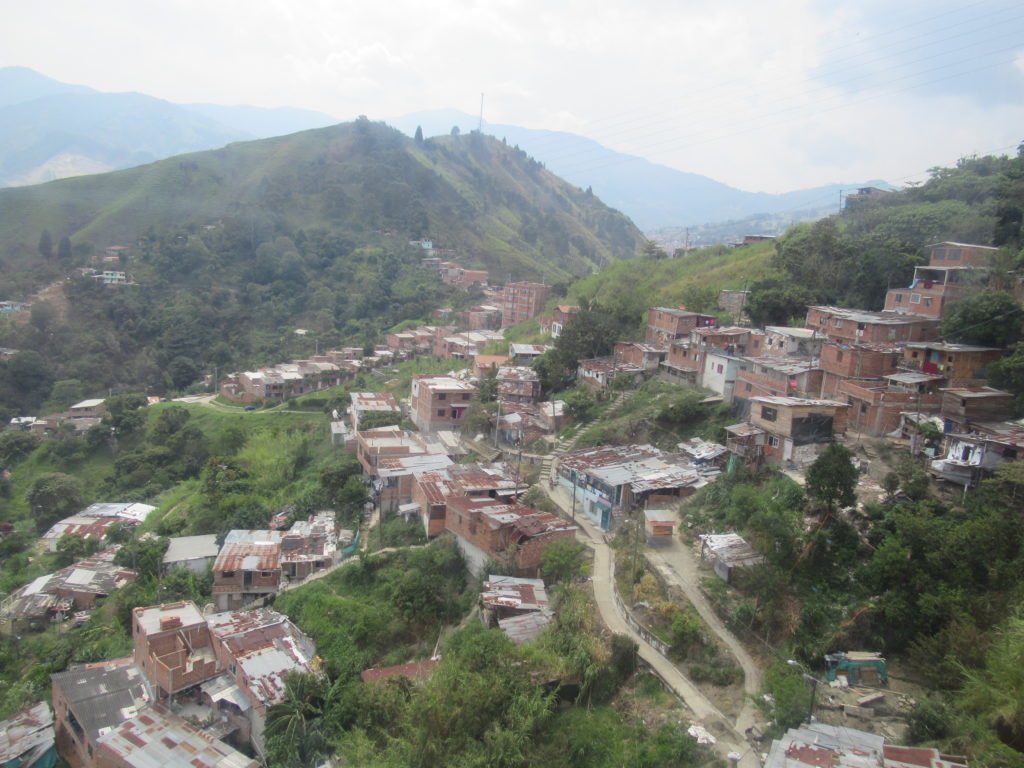

The cable car covered an impressive 2.7km of distance in a straight line over Medellin. Doing the same journey by road would be an 8km traffic-clogged slog around the mountain! It was easy to see how much time it would save for residents,
We stayed on the cable car and completed the loop back to San Javier metro station. It had been a really interesting day. Although the part of Comuna 13 with the murals was EXTREMELY overrun with tourists, it didn’t detract TOO much from the overall enjoyment. The sheer numbers of people meant that there was plenty of entertainment available…. and with that, I will leave you with some Comuna 13 breakdancers putting on a show…
